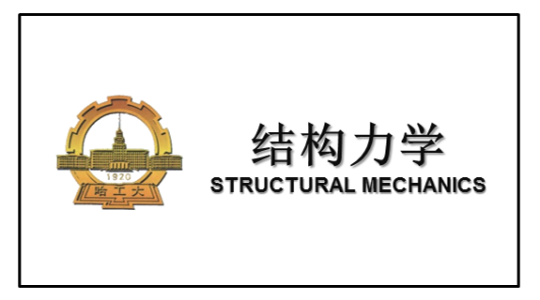
当前课程知识点:Fundamentals of Inorganic Materials Science > 5 Phase equilibrium > 5.4 Binary diagrams > 5.4.1 Binary diagram with eutectic point
返回《Fundamentals of Inorganic Materials Science》慕课在线视频课程列表
返回《Fundamentals of Inorganic Materials Science》慕课在线视频列表
同学们好
现在我们来研究二元系统相图
无机非金属材料
和金属材料体系所属的相图都是凝聚系统
凝聚态系统在高温下的时候
压力可以省略不计
所以对于二元凝聚系统
F=C-P+1 F=3-P
二元凝聚态系统最多有三相共存
当只有一个相存在时
自由度最大为2
二元系统相图横坐标为浓度
纵坐标是温度
我们将学习二元系统相图的8种类型
在学习二元系统相图的时候
我们要求大家掌握图中点
线面的含义
然后会写析晶路程
接下来会利用杠杆规则计算
某一平衡系统中各相的含量
最后我们要学会应用相图
这次课
我们主要学习第一类二元系统相图
叫做具有低共熔点的二元系统相图
这个相图中
两个组分在液态时能以任何比例互溶
两组分间既不生成新的化合物
也不形成固溶体
这是8类相图最简单的一种
虽然简单
但却是我们学习其它类型二元相图的重要基础
因此我们要详细加以讨论
首先
我们来分析点
线面的含义
图中的a点是组分A的熔点
b点是组分B的熔点
E点是组分A和组分B的二元低共熔点
aE bE是液相线 GH为固相线
这三条线把整个相图划分成四个相区
液相线aE bE以上的L相区
是高温熔体的单相区
固相线GH以下的A+B相区
是由晶体A和晶体B组成的二相区
液相线与固相线之间有二个相区
aEG代表液相与组分A晶体平衡共存的二相区
bEH则代表液相与组分B的晶体平衡共存的二相区
我们再进一步说明什么是液相线
液相线aE实质上是一条饱和曲线
如有一高温熔体降温冷却
冷却到aE线上的温度
即开始对组分A饱和而析出A的晶体
液相线bE对于组分B也是同样的道理
E点是我们接触到的第一个无变量点
E处于二条饱和曲线的交点
意味着E点液相同时对组分A和B饱和
因而
从E点液相中将同时析出A晶体和B晶体
此时系统中三相共存
F=0
即系统处于无变量的平衡状态
因而低共熔点E是此二元系统中的一个无变量点
E点对应温度称为低共熔温度
知道了点线面的含义
下面我们来分析系统M的析晶路线
首先
M高温下只有一个相
所以自由度是2
降温碰到了A的液相线
对A饱和
析出晶体A
继续降温
液相组成点必定沿着A的饱和曲线aE向E点变化
这个过程不断地析出晶体A
初始固相中只有A
所以固相组成点从a走到SE点
液相点到达低共熔点E
从液相中将同时析出AB两晶体
系统中三相共存
F=0
系统是无变量的
液相点只能停留在E点
不断析出晶体A和晶体B
固相点从SE点向右移动
当固相点和系统组成点重合时
最后一滴液相析出A晶体和B晶体
液相消失
系统从三相平衡状态回到二相平衡状态
获得一个自由度
因而系统的温度又可继续下降
接下来我们学习杠杆规则
通过杠杆规则可以计算系统中各相的含量
运用杠杆规则时
需要分清系统组成点 液相点 固相点的概念
系统组成点由原始配料组成决定的
对于M配料而言
系统点必定在M1M3线上变化
系统中的液相组成
和固相组成是随温度不断变化的
因而液相点
固相点的位置也随温度而不断变化
因为固液二相处于平衡状态
温度必定相同
因而任何时刻系统点
液相点
固相点三点
一定处在同一条等温的水平线上
又因为固液二相是从高温熔体分解而来
液相点
固相点
在任何时刻必定都分布在系统组成点的二侧
以系统组成点为杠杆支点
运用杠杆规则
可以方便地计算
在任一温度 处于平衡的固液二相的数量
图中在T1温度的时候
晶体A还没有析出来
所以系统中全是液相
到达T2温度的时候
固相含量等于液相点到系统组成点的距离
比上液固两点的距离
也就是M2L2比上总长S2L2
而液相的含量等于
固相点到系统组成点的距离比上液固两点的距离
通过上述讲解
我们来归纳一下相图的作用
通过写析晶路线
如刚才分析的M的析晶路线
我们可以知道开始析晶的温度
析晶终点及熔化终点的温度
也可以知道平衡时相的种类 组成
利用杠杆规则确定系统中平衡时各相的含量
这样我们就可以预测瓷胎的显微结构
结构影响性质
继而我们就可以预测产品性质
这次课
我们主要讲了最简单的二元系统相图
及运用杠杆规则计算系统中各相的含量
希望同学们认真领会
为后续较复杂二元系统相图的学习打好基础
同学们 下次课再见
-Test for chapter 1
-2.1 Type of defect
-2.2.1 The expression methods of point defects
--2.2.1 The expression methods of point defects
--2.2.1 The expression methods of point defects
-2.2.2 The rules for writing of defect reaction equation
--2.2.2 The rules for writing of defect reaction equation
--2.2.2 The rules for writing of defect reaction equation
-2.3 Calculation of thermal defect concentration
--2.3 Calculation of thermal defect concentration
--2.3 Calculation of thermal defect concentration
-2.4 Non-stoichiometric compounds
--2.4 Non-stoichiometric compounds
--2.4 Non-stoichiometric compounds
-Homework for chapter 2
-Test for chapter 2
-3.1 The classification of solid solutions
--3.1 The classification of solid solutions
--3.1 The classification of solid solutions
-3.2 Substitutional solid solution
--3.2 Substitutional solid solution
--3.2 Substitutional solid solution
-3.3 Interstitial solid solution
--3.3 Interstitial solid solution
--3.3 Interstitial solid solution
-3.4 The research method of solid solutions
--3.4 The research method of solid solutions
--3.4 The research method of solid solutions
-3.5 Questions for crystal imperfection and solid solution
--Questions for crystal imperfection and solid solution
-Homework for chapter 3
-Test for chapter 3
-4.1 Melt structure
-4.2 The properties of the melt
--4.2.1 The properties of the melt_viscosity
--4.2.2 The properties of the melt_surface tension
--4.2 The properties of the melt
-4.3 The characteristics of glass
--4.3 The characteristics of glass
--4.3 The characteristics of glass
-4.4 The formation of glass
--4.4.1 The formation of glass_kinetics conditions
--4.4.2 The formation of glass_crystal chemical conditions
-4.5 The structure of glass
-4.6 The typical glass
-4.7 Questions for melt and glass
--Questions for melt and glass
-Test for chapter 4
-5.1 Phase equilibrium in silicate systems
--5.1 Phase equilibrium in silicate system
--5.1 Phase equilibrium in silicate system
-5.2 One-component system phase diagram
--5.2 One-component system phase diagram
--5.2 One-component system phase diagram
-5.3 Applications of one-component diagrams
--5.3 Applications of one-component diagrams
--5.3 Applications of one-component diagrams
-5.4 Binary diagrams
--5.4.1 Binary diagram with eutectic point
--5.4.2 Binary system with a congruent melting compound and one with an incongruent melting compound
--5.4.3 Other five types of phase diagrams of binary systems
-5.5 Applications of binary phase diagrams
--5.5 Applications of binary phase diagrams
--5.5 Applications of binary phase diagrams
-5.6 Ternary diagrams
--5.6.1 Representation of ternary system composition
--5.6.1 Representation of ternary system composition
--5.6.2 Three-dimensional state diagram and plane projection diagram of a simple ternary system
--5.6.2 Three-dimensional state diagram and plane projection diagram of a simple ternary system
--5.6.3 (1) Basic types of ternary phase diagrams
--5.6.3 (2) Basic types of ternary phase diagrams
--5.6.3 (3) Basic types of ternary phase diagrams
--5.6.3 Basic types of ternary phase diagrams
-5.7 Applications of ternary phase diagrams
--5.7 Applications of ternary phase diagrams
--5.7 Applications of ternary phase diagrams
-5.8 Research methods of phase equilibrium
--5.8 Research methods of phase equilibrium
--5.8 Research methods of phase equilibrium
-5.9 Questions for phase equilibria
--Questions for phase equilibria
-Homework for chaper 5
-Test for chapter 5
-6.1 Overview of diffusion
-6.2 The kinetic equations of diffusion
--6.2 The kinetic equations of diffusion
--6.2 The kinetic equations of diffusion
-6.3 The thermodynamic equation of diffusion
--6.3 The thermodynamic equation of diffusion
--6.3 The thermodynamic equation of diffusion
-6.4 Diffusion mechanisms and diffusion coefficient
--6.4 Diffusion mechanisms and diffusion coefficient
--6.4 Diffusion mechanisms and diffusion coefficient
-6.5 Diffusion in solid
-6.6 Factors affecting diffusion
--6.6 Factors affecting diffusion
--6.6 Factors affecting diffusion
-6.7 Questions for diffusion
-Homework for chaper 6
-Test for chapter 6
-7.1 Overview of solid state reactions
--7.1 Overview of solid state reactions
--7.1 Overview of solid state reactions
-7.2 Kinetic equation of solid state reaction
--7.2 Kinetic equation of solid state reaction
-7.3 Factors affecting the solid state reaction
--7.3 Factors affecting the solid state reaction
--7.3 Factors affecting the solid state reaction
-Homeword for chapter 7
-8.1 The categories of phase transformation
--8.1 The categories of phase transformation
--8.1 The categories of phase transformation
-8.2 Crystallization
--8.2.1 Crystallization thermodynamics
--8.2.2 Crystallization kinetics
-8.3 Phase Separation of glass
--8.3 Phase separation of glass
--8.3 Phase separation of glass
-8.4 Questions for phase transformation
--Questions for phase transformation
-Test for chapter 8
-9.1 Overview of sintering
-9.2 The driving forces and models of sintering
--9.2 The driving forces and models of sintering
--9.2 The driving forces and models of sintering
-9.3 Solid state sintering
--9.3.1 Evaporation-Condensation mass transfer
--9.3.2 Diffusion mass transfer
-9.4 Liquid phase sintering
--9.4.2 Solution-Precipitation mass transfer
-9.5 Grain growth and secondary recrystallization
--9.5.2 Secondary recrystallization
--9.5 Grain growth and secondary recrystallization
-9.6 Factors affecting sintering
--9.6 Factors affecting sintering
--9.6 Factors affecting sintering
-9.7 Questions for sintering
-Homework for chapter 9
-Test for chapter 9


